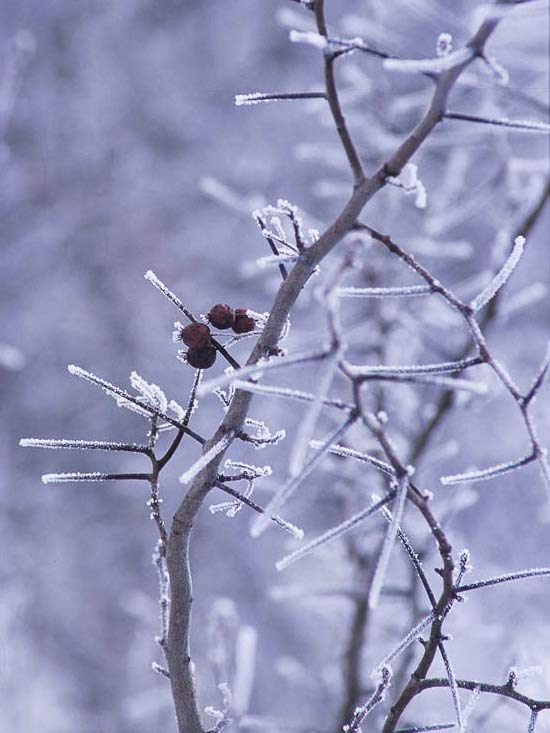
In summertime, a garden is a riot of color and texture. But come the cold-weather months, a winter garden may be bereft of interest.
See winter landscape tips from the Test Garden.
It doesn't have to be so: Many gardeners realize that, with a little planning and effort, they can extend their garden into four seasons. "Winter is my most favorite garden season," says Vincent Simeone, a horticulturalist, lecturer, and garden writer. "There are wonders of winter landscape, but we sort of forget that winter is gardening season." Fortunately, there are easy ways to change that.
- Evaluate your landscape. Before you do anything, take stock of your winter garden as it is now. Snap photos to see where the landscape is lacking or where it works well. "You really just have to look at the winter garden differently, and realize you have lots of opportunity," Simeone says.
- Break winter into mini seasons. There's a beginning, middle, and end to winter that lends itself to different plants with different levels of interest. Research plants and think about how they'll perform throughout the cold-weather months, Simeone says.
- Focus on views. Winter gardens can offer brilliant visual interest. Evergreens are, of course, a much-relied on addition to the winter landscape, but there are others that add stunning beauty, Simeone says. Good examples include viburnum, pussy willow, redtwig dogwood, and hardy camellias. Trees and larger perennials that don't need to be cut back may offer color and texture with bark and seed heads, such as ornamental grasses.
- Search for plants that extend their seasons. There are some flowers, shrubs, and trees that will stretch their foliage, fruit, and blooms into the winter garden. "Witch hazel is my number one winter plant," Simeone says. Winter jasmine will also bloom where hardy.
- Work on strategic placement. If you have a plant that already looks good in the winter garden, consider transplanting it elsewhere. In addition, use evergreen shrubs and trees to screen unsightly views, such as a stark fence, that might not have been as noticeable in summer.
- Add plants for birds and wildlife. A lot of people love bird activity in winter landscape, which offers you a chance to see and appreciate them in a whole different way, Simeone says. Go for plants such as deciduous holly. "It's very beneficial to gardening to put in plants that attract and offer food for birds," Simeone says.
- Do your research. Take time to look up plants before you add them to the garden. "Have a list of plants you like and look good in garden," Simeone says. "Winter is an underutilized, underappreciated garden season that people should take advantage of more," he says.
Browse shrubs with winter landscape interest.






